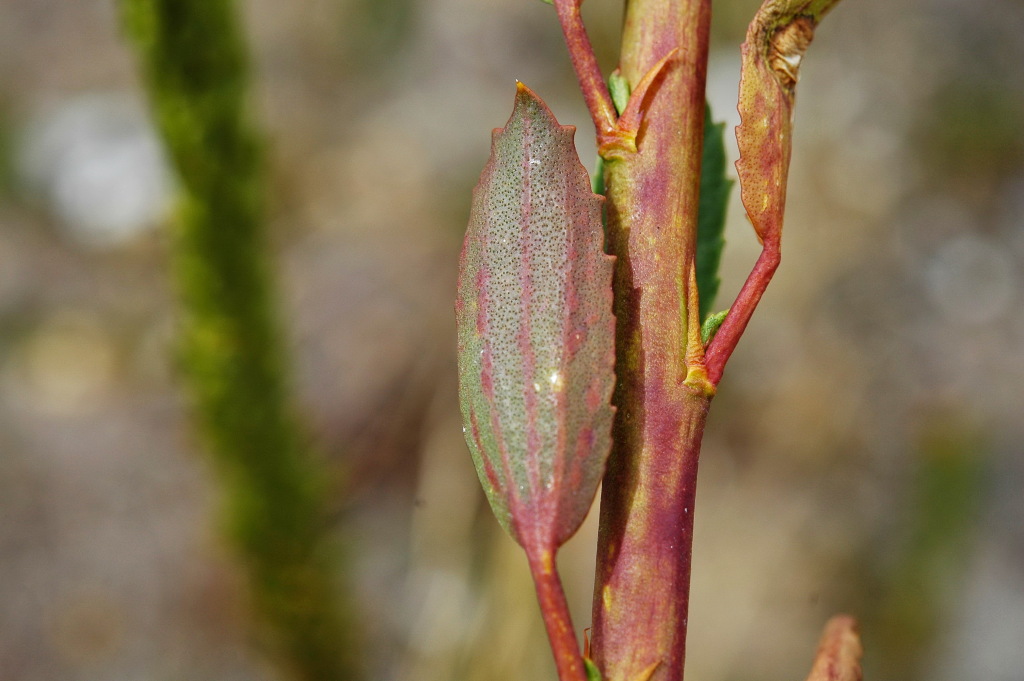Lawrencia spicata
Hook. Salt LawrenciaSlender, erect, glabrous, subfleshy herb to c. 120 cm high, 1–few-stemmed from base. Leaves and stems bright yellow-green; basal leaves ± rosetted, long-petiolate, lamina elliptic, 2–5 cm long, 1–2 cm wide, longitudinally 3–5-veined, margins crenate to serrate; lower stem leaves resembling basal leaves, floral leaves smaller (often below 1 cm) and sessile, with prominent stipules and less-toothed to entire margins. Inflorescence an erect spike, occupying c. one-third of the (usually simple) stem. Flowers bisexual, sessile or subsessile, solitary or paired in axils of floral leaves; calyx c. 5 mm long, 5-angled, 5-lobed from midway or below; petals free, oblong or narrowly ovate, equal to or slightly exceeding sepals, pale yellow; anthers 10–20; styles 5. Fruit c. trigonous-ovoid, 3 mm long; mericarps indehiscent, pointed at apex. Flowers Jan.–Apr.
Wim, VVP, GipP, OtP, WaP, DunT, EGL, WPro, Strz. Also WA, SA, Tas. An occasional component of saltmarsh communities along the coast, rare in saline depressions and around salt lakes of south-western Victoria (e.g. Polkommet near Horsham, Harrow district, Camperdown, Lake Corangamite).
Walsh, N.G. (1996). Lawrencia. In: Walsh, N.G.; Entwisle, T.J., Flora of Victoria Vol. 3, Dicotyledons Winteraceae to Myrtaceae, pp. 352–355. Inkata Press, Melbourne.
 Spinning
Spinning


